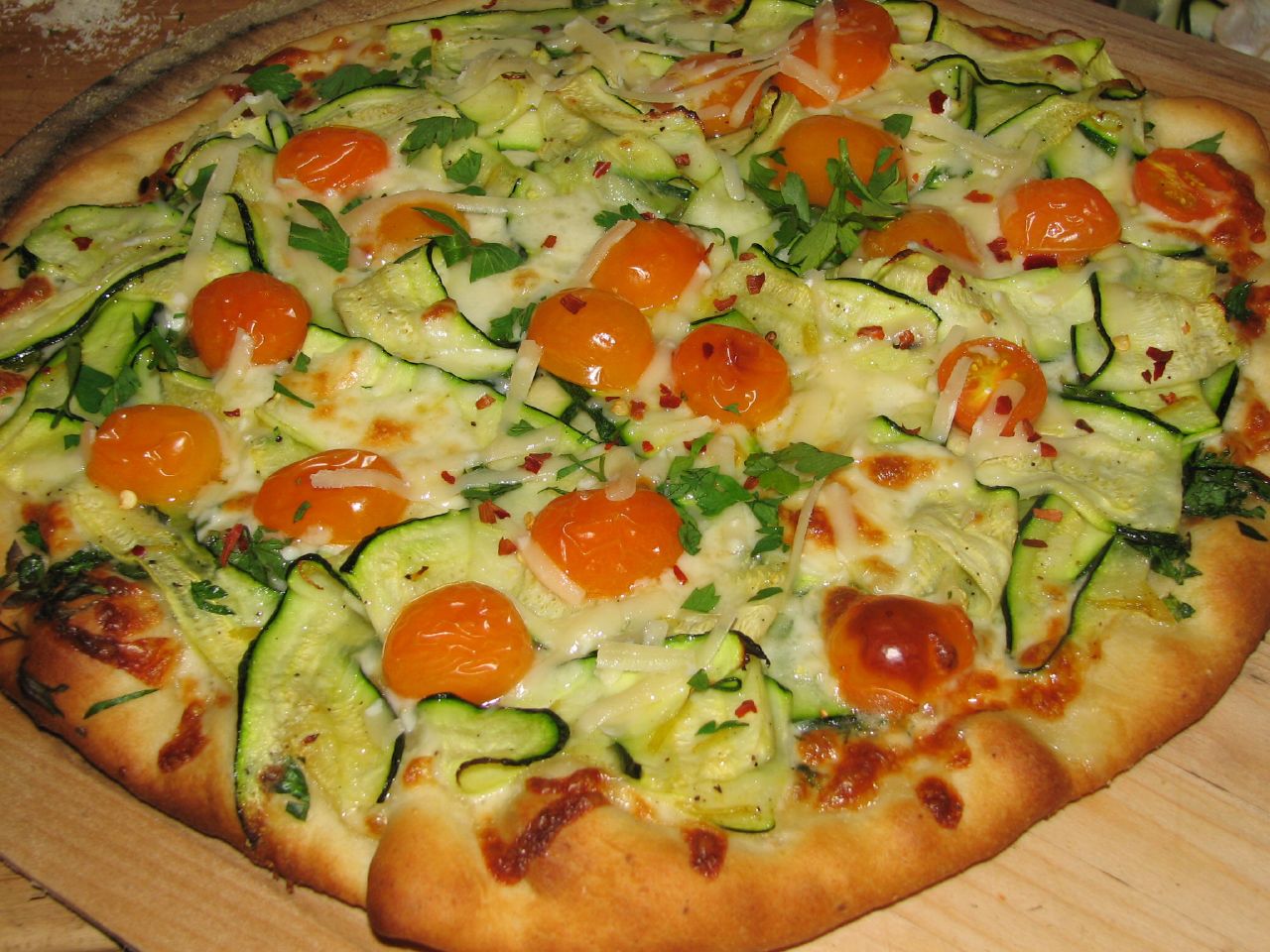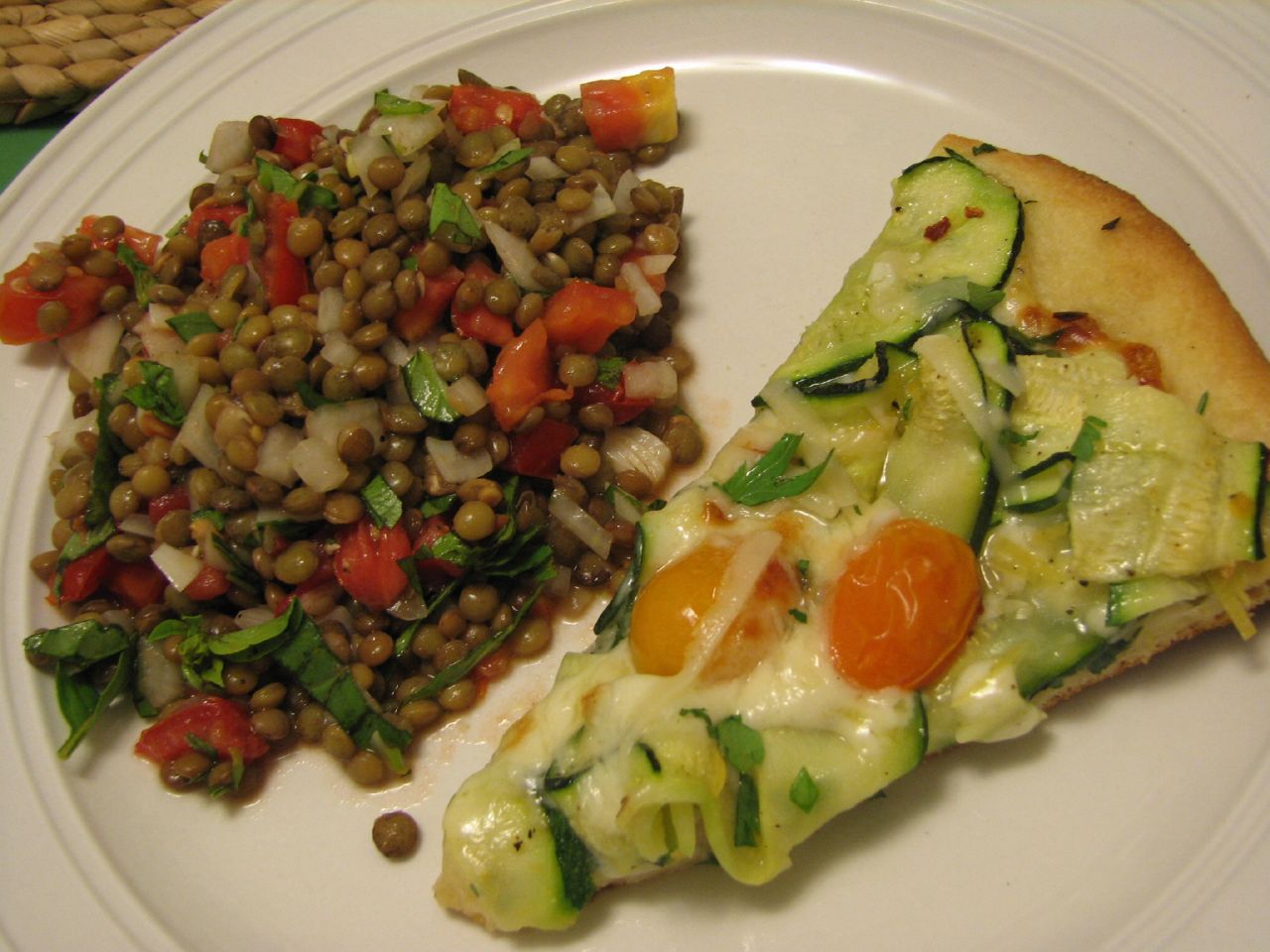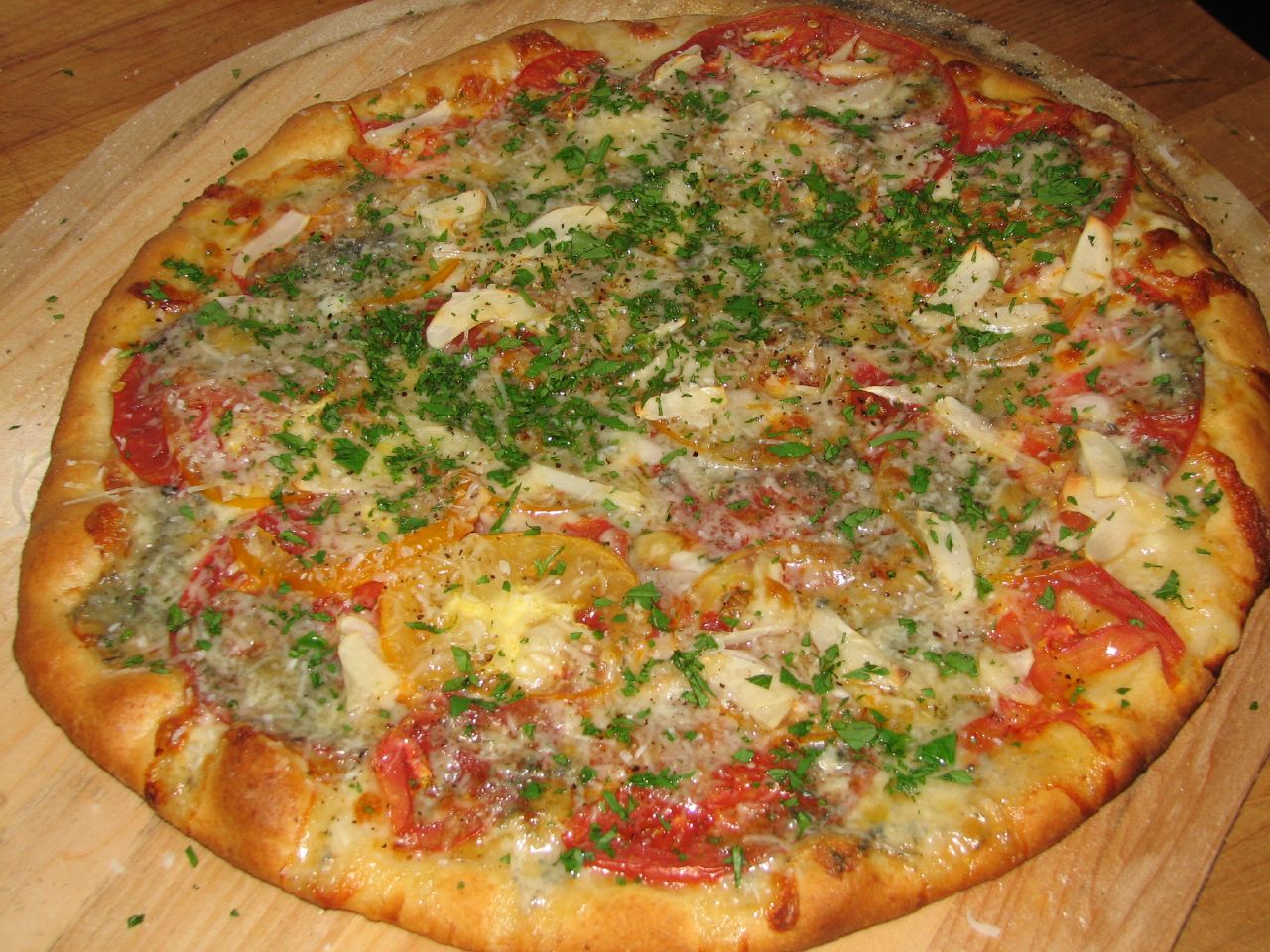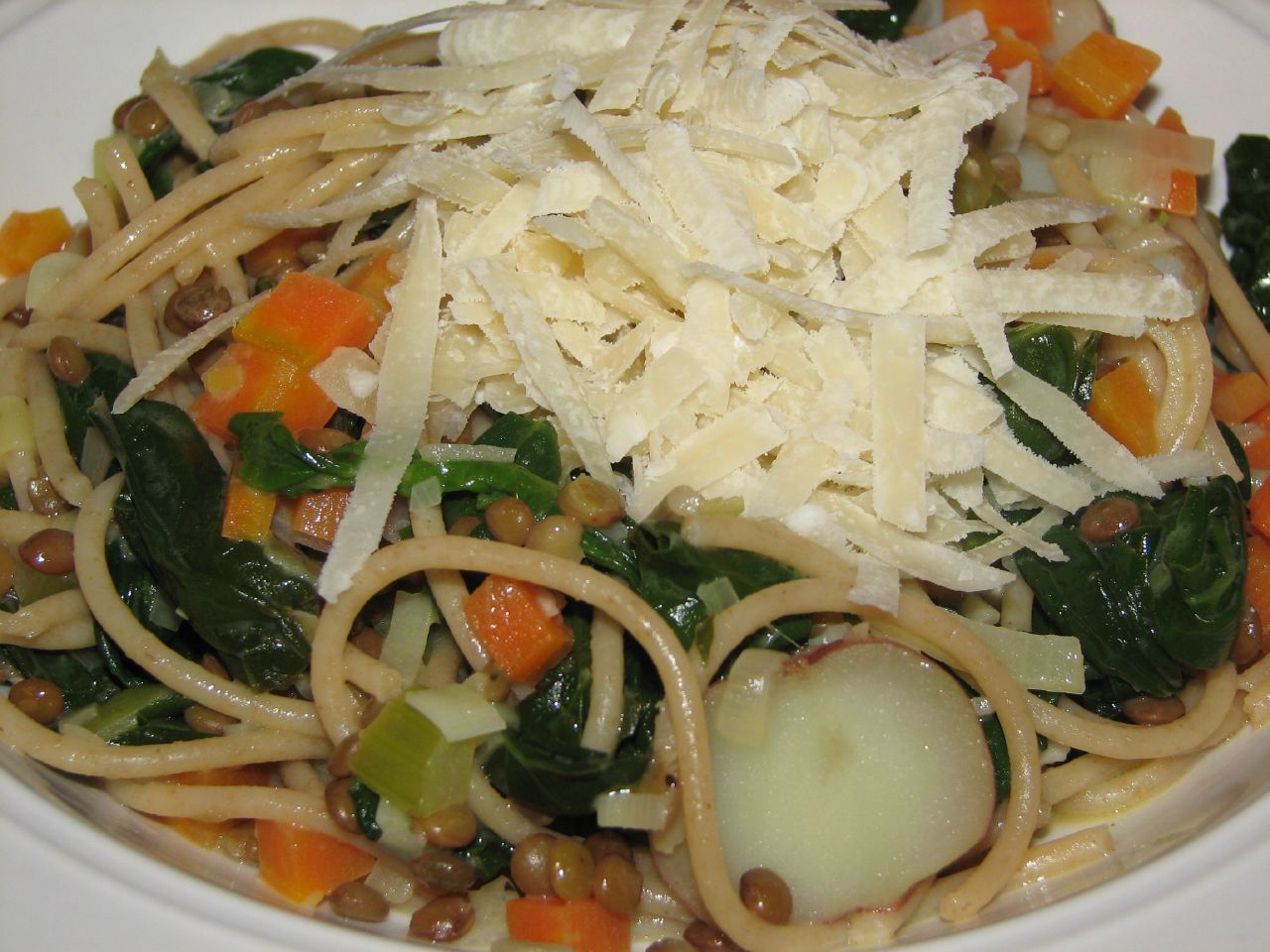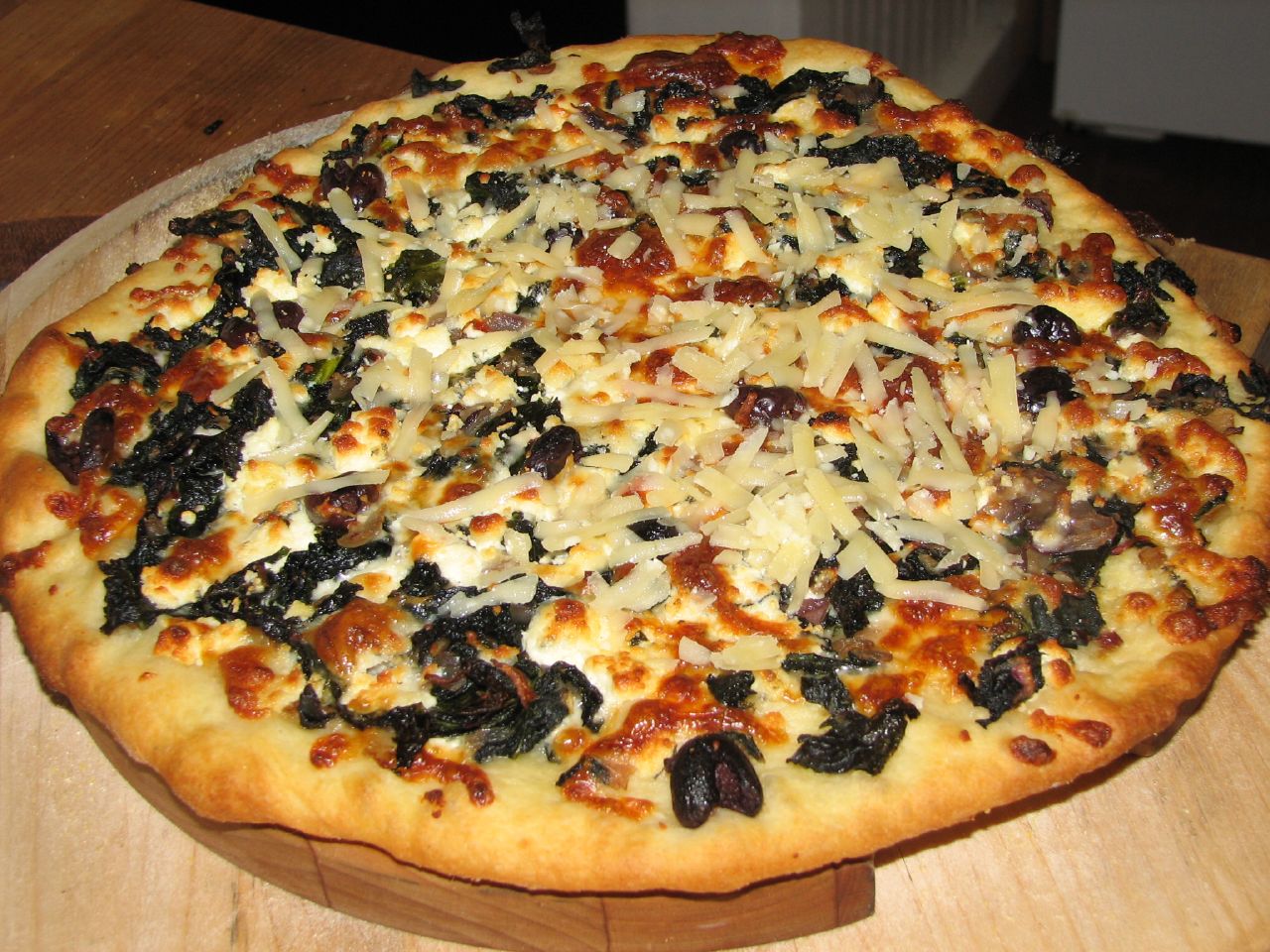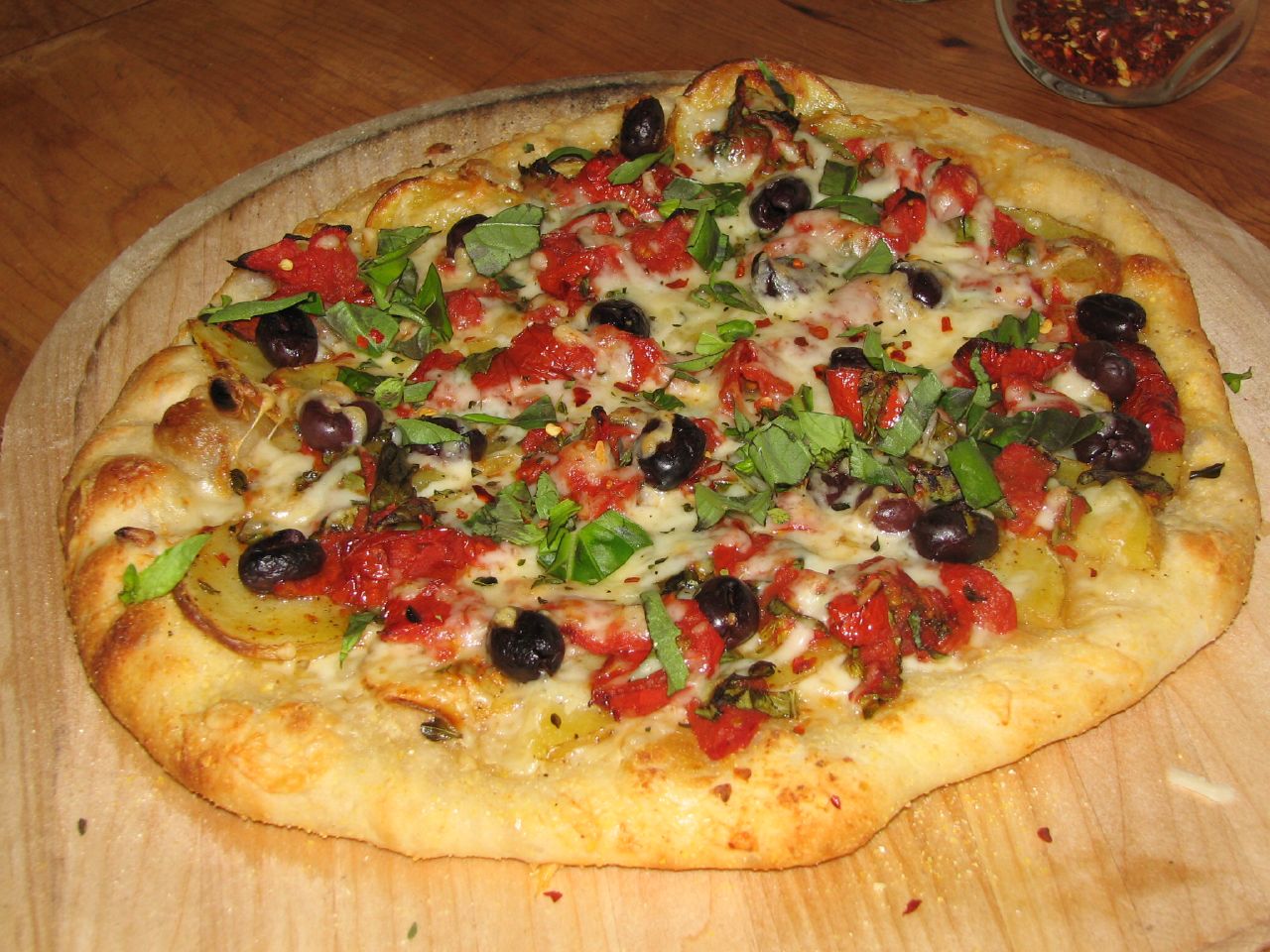I spent the weekend in the kitchen, despite the beautiful California spring weather and the weeds taking over my backyard patio.
I started Saturday off with a smoked salmon tart. You may remember this tart (or quiche) - I've posted about it
previously. This seemed like a perfect opportunity to document more fully the making of a non-yeasted tart dough, especially since my proficiency level has increased exponentially from the early days (read: September).
A good crust starts with cold butter, cold water, flour, and salt. That is it. The key is not to add too much water. I make mine in a tiny food processor and stop adding water as soon as damp, loose crumbs form.
The second step is to roll out the crust to the desired thickness (large enough to fold over the edges and create a lip when the crust is placed in the tart pan). I finally have enough rolling pin skills to do this well. Here is the crust pre-oven:

Next, the crust is frozen briefly before baking for 25 minutes. Here is a shot of my home-made pie weight (kidney beans in foil) and sauted green garlic and spinach, waiting to fill the tart:

Last but not least, the pre-baked tart shell is filled with the sauted greens, smoked salmon and a custard mix of eggs, milk, and creme fraiche (I beat 2 eggs and 1/2 cup creme fraiche in a 2 cup pirex, then pour in enough milk to bring to a total of 1 3/4 cups) and baked for about 40 minutes.
Finally, serve with a salad dressed lightly with honey and spring onion vinaigrette:
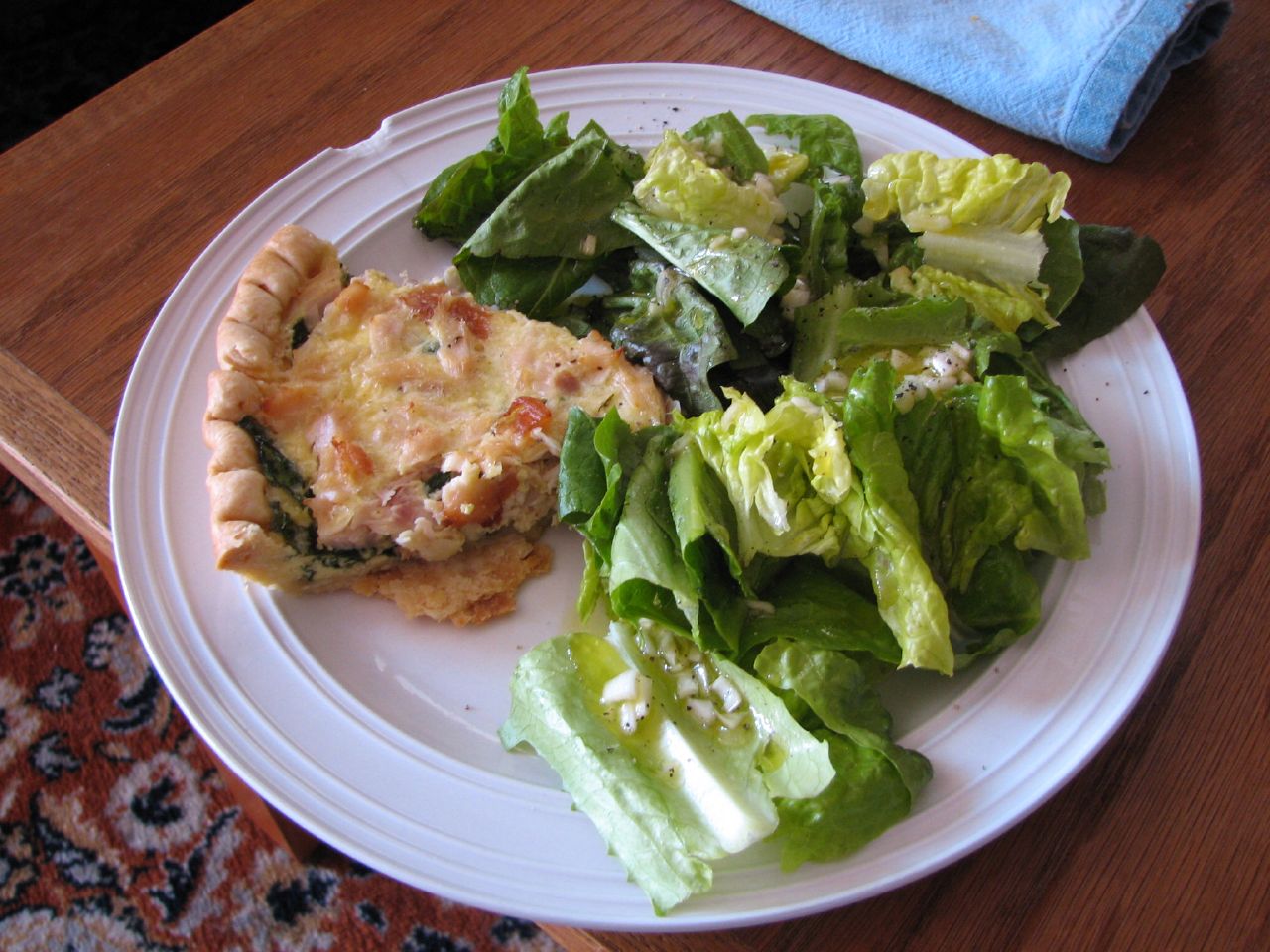
Take a brief tour through my
past tart /
quiche exploits. While they were all pretty yummy, I think I'm finally getting to the point where I'm making something quite lovely that gets the details right.
